02.08.2016: After leaving Oshkosh I drove down to Dayton, Ohio, which some call the birthplace of Aviation. That’s where the Wright Brothers lived and developed their planes. It is also home of Wright-Patterson Air Force Base, which includes the oldest and still most important research facility of the US Air Force. And with that comes the National Museum of the United States Air Force, which is one of the most important and spectacular aviation museums on this planet. There are more than 300 aircraft on display, an more than a million visitors every year.

The museum originally opened in 1923 and is today housed in four huge hangars, of which the last one only opened this summer, and a round tower between hangars 3 and 4 to display rockets.

It is impossible to give a full report here of the museum, so I picked a few of the most spectacular planes on display.
The hangars are largely organised according to time periods, starting with the early years up to the 2nd World War, then 2nd World War, Korean war, Vietnam war, Cold War and Missiles and Space. There are also a sections dedicated to presidential planes, and to research aircraft.

There are mostly planes exhibited, but also other artefacts such as this wind tunnel built by Orville Wright.

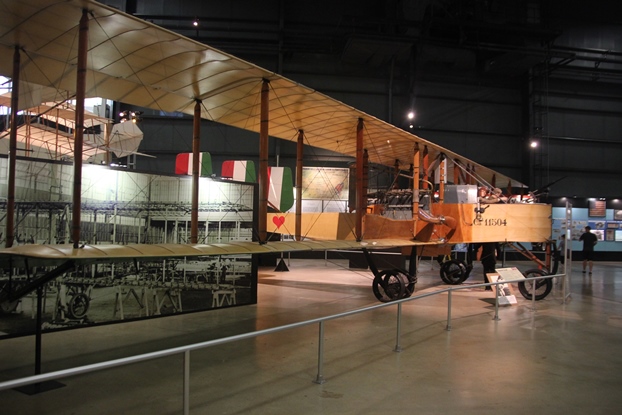
The 2nd world war gallery includes all the planes used by the air force, respectively the Army Air Corps as it was called until 1941, when the Air Force became an independent organisation,…

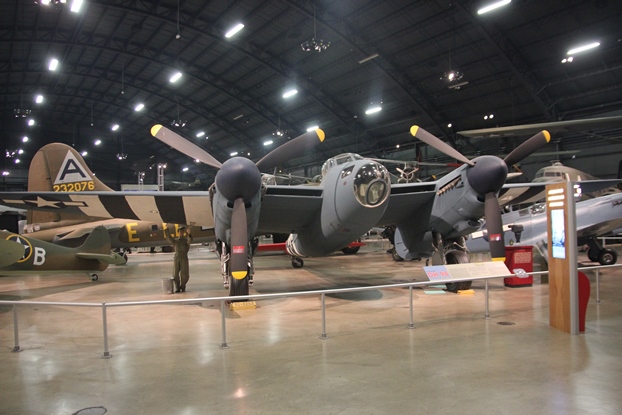
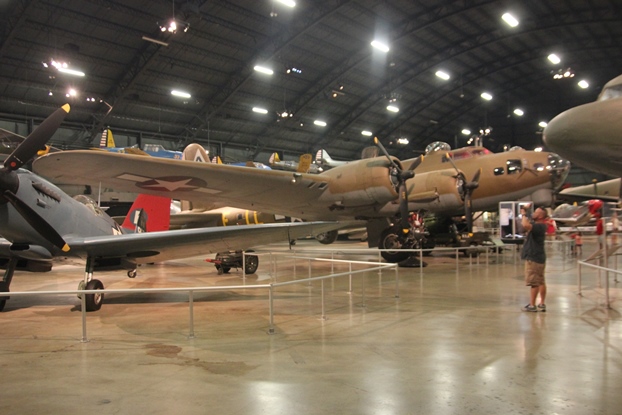
…as well as some enemy aircraft they captured and flight tested in the US.

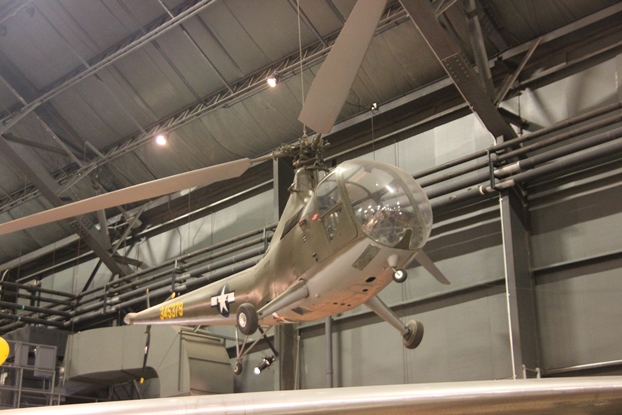

In the round space tower most rockets, or rather missiles from the cold war area are on display.
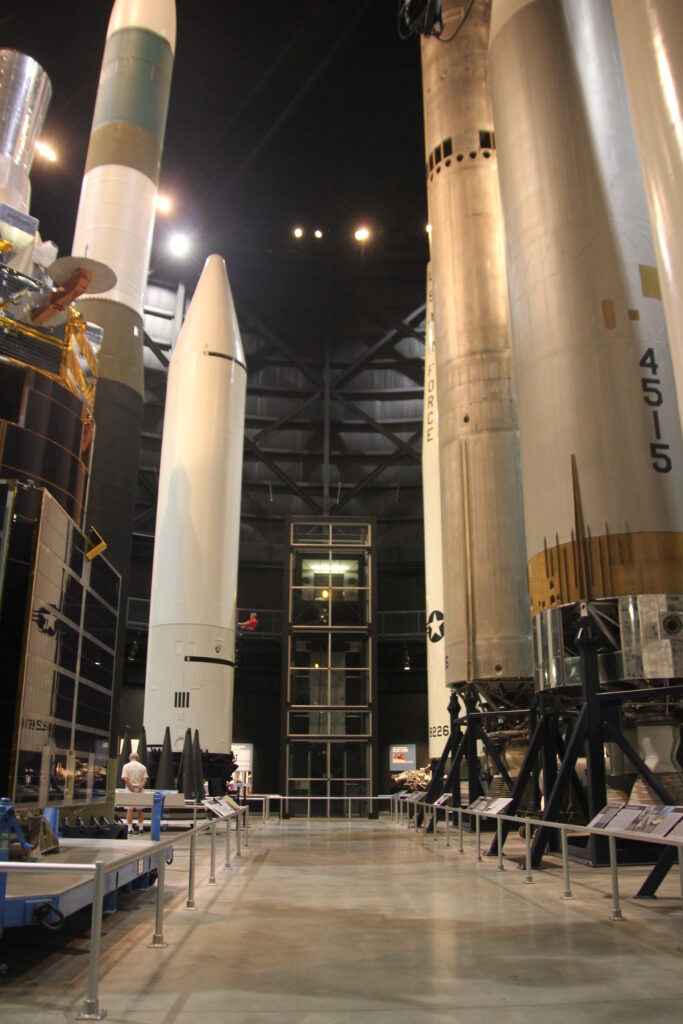
They do however also have quite some interesting artefacts from the US AIr Force’s space activities on display, such as the various concepts to develop re-entry vehicles.
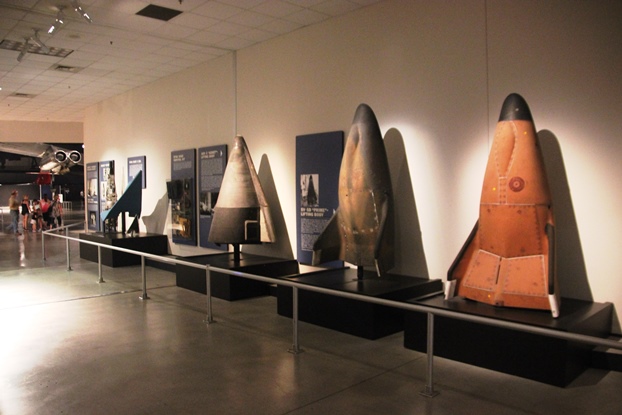
Other artefacts include a space jet-backpack, from which the one later used on the Space Shuttle was developped…

…and a weird looking, competing space sledge “thing”, that never got anywhere. It more looks like something from a science fiction movie from the 30’s.
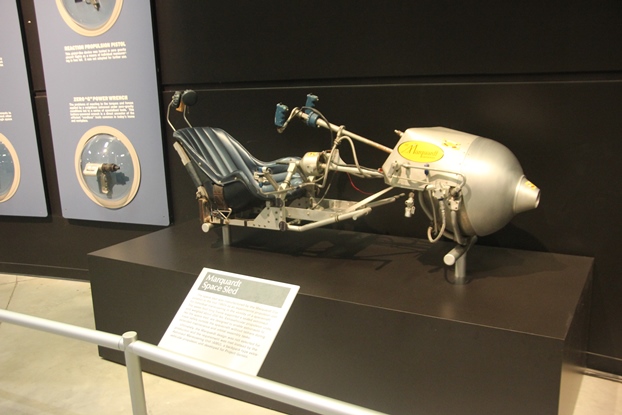
They also have some other weird gadgets on display, of which some got adopted but others not.

The most successful one was this battery powered wrench, ancestor of today’s power tools.
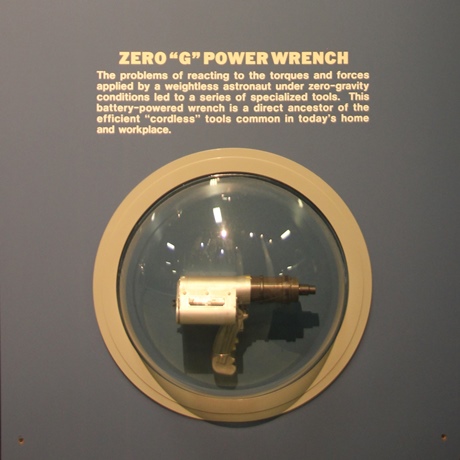
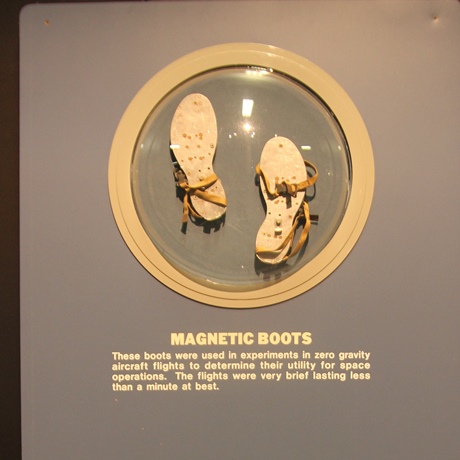
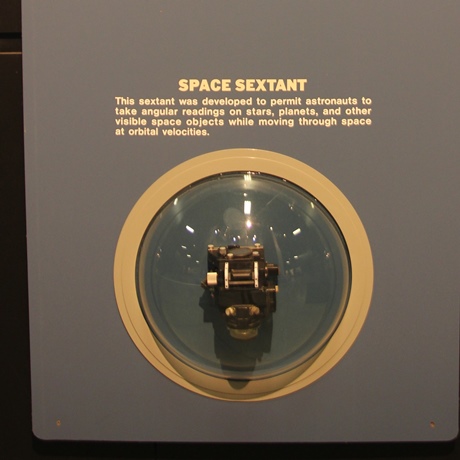

The newly opened research hangar is the most interesting one for an engineer like me, as it houses many of the X-planes, from the Bell X-1B (1954), a development of the X-1 which first broke the sound barrier to the X-70 Valkyre, a Mach 3 capable heavy bomber built in the 60s that never went into production.

The Bell X-1B (1954) is a development of the X-1. the first aircraft to fly faster than the speed of sound.

The North American X-15 (1959) is still today the fastest aircraft ever flown, reaching Mach 6.7 in 1967.

The Martin-Marietta X-24 (left, 1969) and X-24B (right, 1973) were lifting body designs developed to study the problem of space re-entry aircraft.
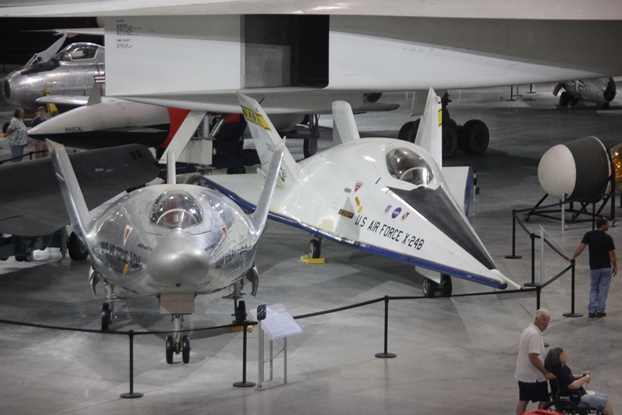
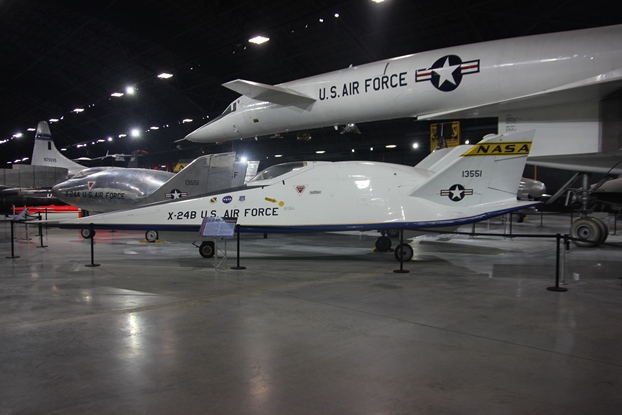
The Boeing X-40A (1998) was a 90% size version of the later X-37B, an unmanned space plane developed to deploy and maintain satellites. The X-40A was only used for drop tests to develop landing schemes. It never flew into space.

The Northrop X-4 Bantam (1948) was a tailless aircraft based on data from the Messerschmitt Me 163 rocket plane.

The Bell X-5 (1951) was the first high-performance airplane with variable sweepback wings. It was based on a design from Messerschmitt from the Second World War.

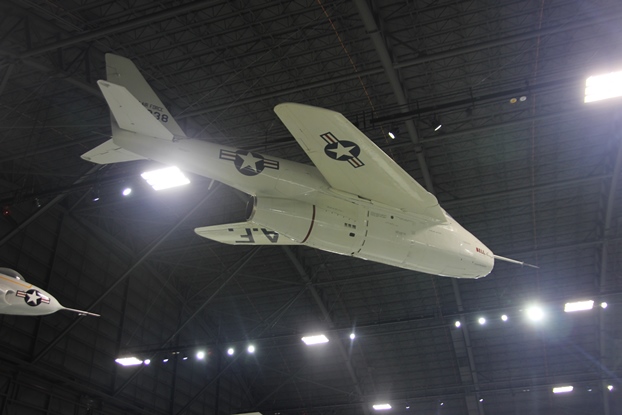
The Douglas X-3 Stiletto (1952) was designed to reach Mach 2, but never achieved this due to engine problems. It however still generated many results that were used to develop subsequent aircraft that flew much faster, such as the X-15 and the SR-71.
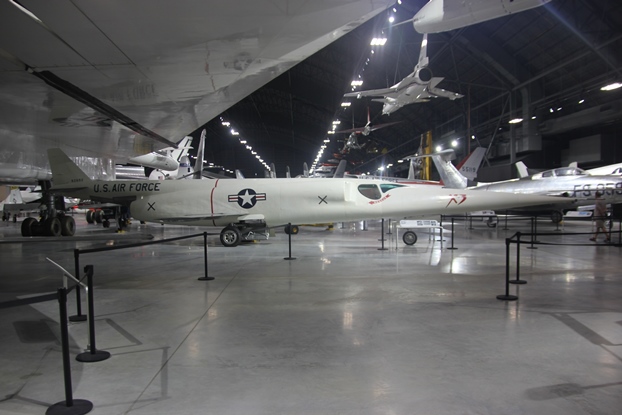
The McDonnell XF-85 Goblin (1948) was developed as a fighter aircraft to be carried on long range bombers, to be launched from the bomber when it was attacked by enemy aircraft. Turbulence around the bombers made their launch, and even more their recovery very hazardous, so the concept was dropped quickly.
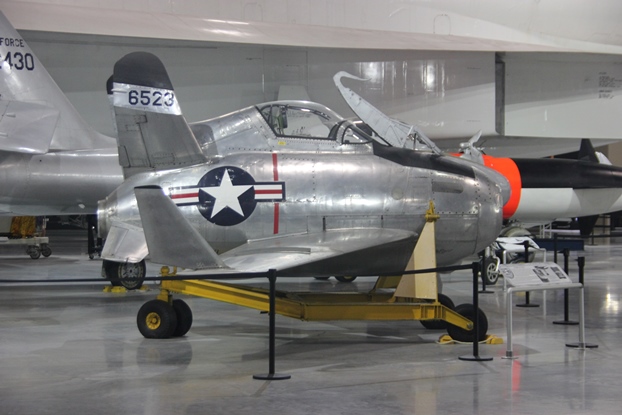
Below an assortment of X-planes…

The Grumman X-29B (1985) was the world’s first forward-swept aircraft to fly at supersonic speed, achieving extreme maneuverability.
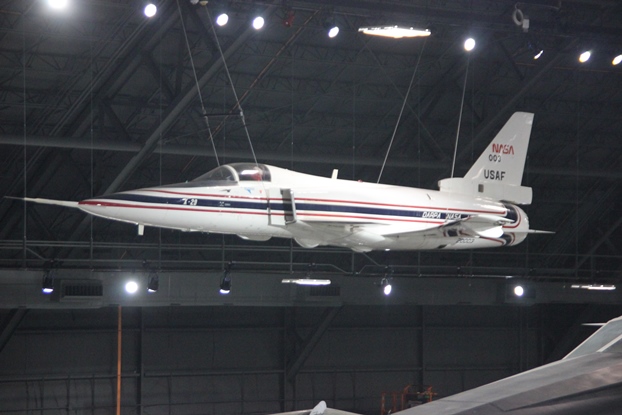
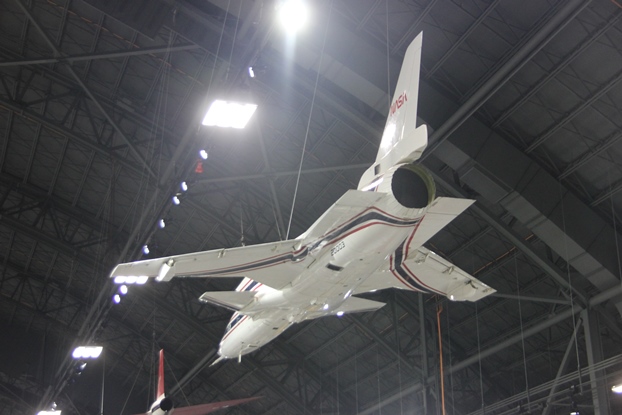
One plane I liked very much is the Bell XV-3, a small tilt rotor that would make a great personal aircraft. Maybe I should consider building one like that.

There is also the Ryan X-13 Vertijet, a vertical takeoff jet that could also land vertically. They used a wall type platform for takeoff and landing, which was later considered not practical.
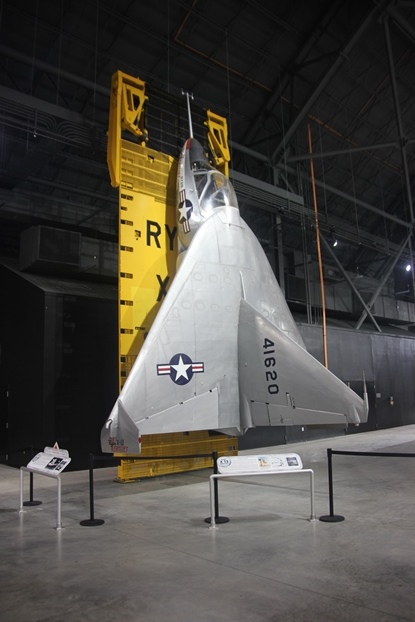
And finally the ultimate homebuilding-project, a flying saucer. It never flew higher than around three feet, but triggered the imagination of the whole science fiction scene.

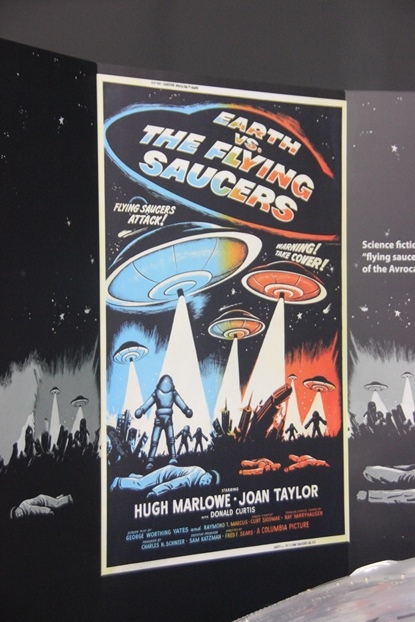
It’s amazing all the planes they build in the 50s, I have the impression that it was sufficient to have a crazy idea to get a project funded. I recently read that NASA is considering starting new X-planes type projects, as they realised that not everything can be tested by simulations.
Also on display are some of the early spy satellites, such as the KH-9 below. The front part is the capsule system used to drop exposed films from space back to earth, where they were captured in flight while descending on a parachute. The actual satellite with the cameras is the big green thing in the background, around the size of a school bus.

And then there are many stealth planes on display, which I find quite amazing. Only some years ago one would have been arrested to only leak minimal information about their existence, and now they are on display in a public museum.
The stealth thing started with the Lockheed U-2, the spy plane of the fifties that they soon found out could be easily tracked by enemy radar. The made some attempt to reduce it’s radar signature by e.g. applying special paint, but with very limited success.

The next spy plane, the A-12 / SR-72 was from the beginning designed to have a minimal radar signature, but again with not too much success as the technology just wasn’t available to predict radar signatures.
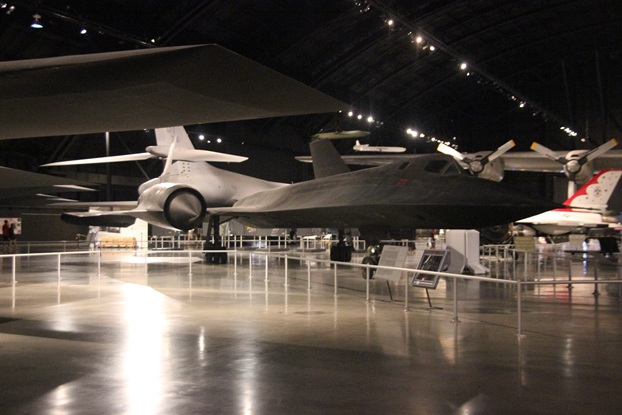
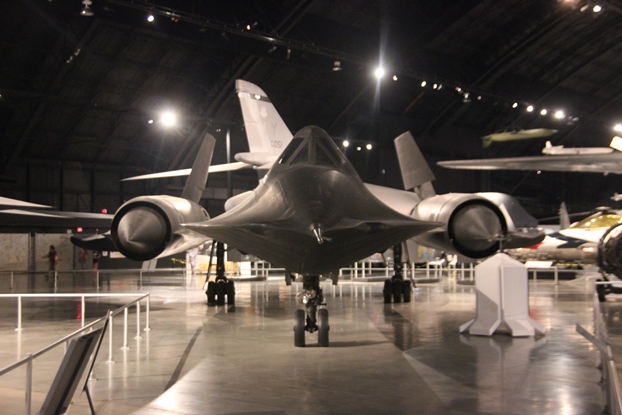
Based on a Russian (!) theory how to reduce radar signatures Lockheed then developed the F-117, the first truly stealthy operational aircraft.

Later Northrop developed Tacit Blue to demonstrate that stealth can also be achieved with rounded shapes. The cockpit windows of this one were blanked out, as there is probably still quite something to learn from how it looks inside. The cockpit looks similar to the one of the stealthy B-2 bomber, which was subsequently developed by Northrop Grumman.

There is a B-2 on display, which surprised me as I knew there is no prototype, all 21 examples built went into operation (one of them was destroyed in a crash). This one was used purely for structural testing, meaning it is not equipped with engines nor with electronics. Externally this does however not make a difference


On the fighter side the F-22 was the next stealthy development after the F-117. It is currently the most capable fighter plane in the world, but also most expensive one ever built.
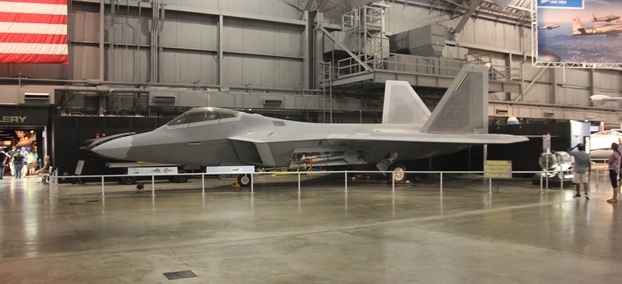
The YF-23 below was a proposal from Northrop in the ATF competition, which lost against the F-22.
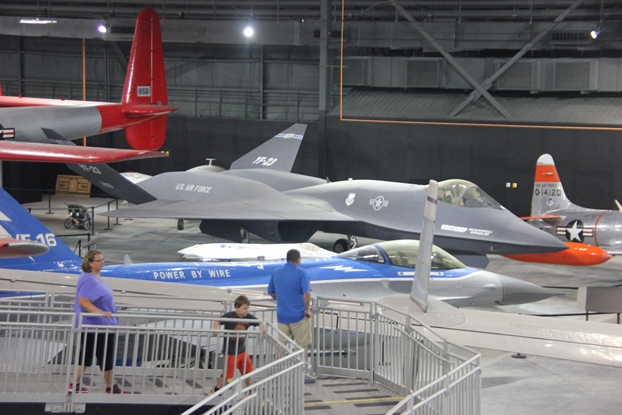
Later McDonnell Douglas (now Boeing) developed the Bird of Prey (1996), which was purely a technology demonstrator which could however also have come straight out of a science fiction movie.

There are also many stealthy drones on display, including research prototypes…
The Boeing YQM-94A Compass Cope B (1973) was a 27 m wingspan predecessor to the stealthy drones, not from a stealth point of view but but operationally, as it could take off and land on normal runways, was operated by a ground based pilot and could fly very long missions.
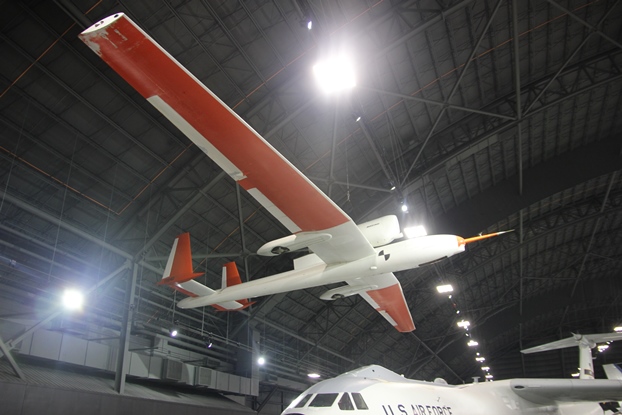
The RQ-3 Dark Star (1996) is a stealthy drone of which two prototypes have been produced for testing, It has a 21 m wingspan, so about the size of a larger modern glider.
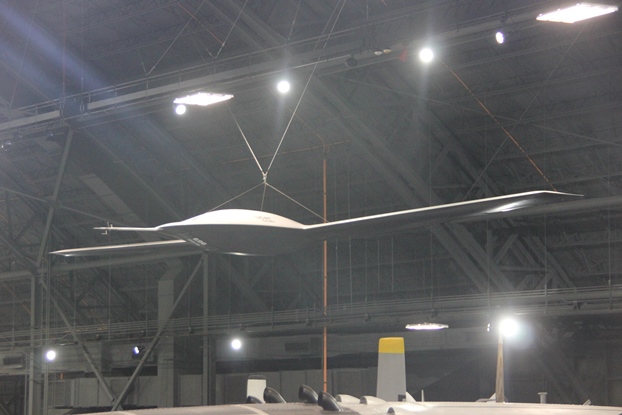
The X-36 (1997), was built as a scaled down version of a possible fighter aircraft, and operated by remote control through a virtual cockpit.

The X-45 (2002) was a drone fighter demonstrator developed from the above shown Bird of Prey aircraft.

…and operational drones.
YMQ-9 Reaper (2001) is an armed drone with again around 21 m wingspan, powered by a 900 hp propeller turbine.

The RQ-4 Global Hawk is a 35 m wingspan high-altitude reconnaissance drone made by Northrop Grumman. It can fly at altitudes of up to 20 ‘000 m and for 36 hours, thus achieving global coverage from only a small number of bases.
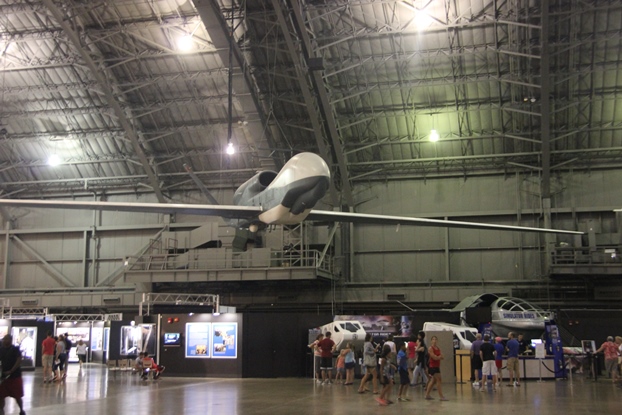
At one end of the new hangar is the presidential planes section, with all “Air Force One” planes on display since the tradition of having presidential planes started. They will soon have to make room for one of the two currently used Boeing 747-200Bs, as Boeing recently got a contract to replace them with 747-8s.

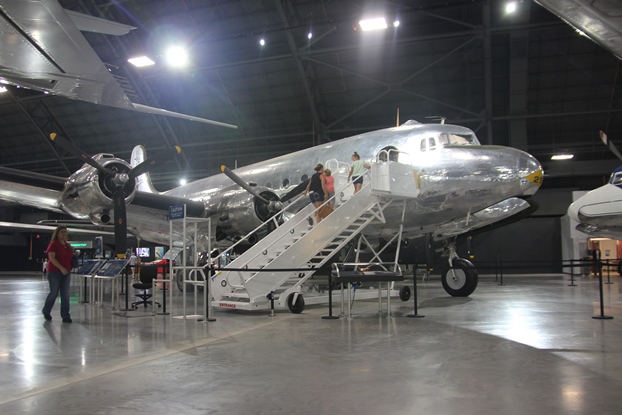

There is also a Lockheed C-141 Starlifter on display, the last one to fly out of Saigon at the end of the Vietnam war. It’s a good indication of how big the hangars of the museum are, it fits easily with it’s nearly 50 m wingspan. From Google earth pictures I estimated their outside dimension to be around 100 m x 250 m each!

Below some more pictured of weird or significant aircraft, for which I did not have the time to add a text. I might do that later.
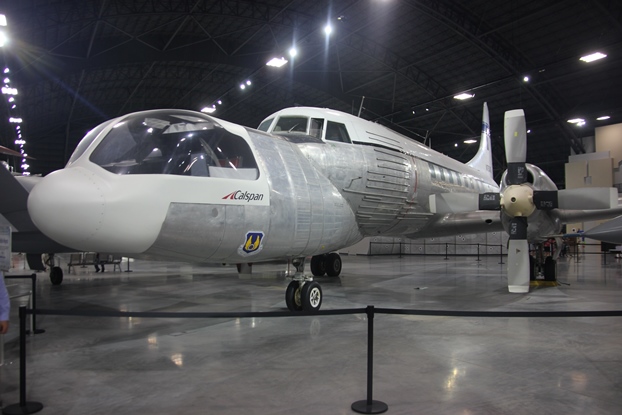

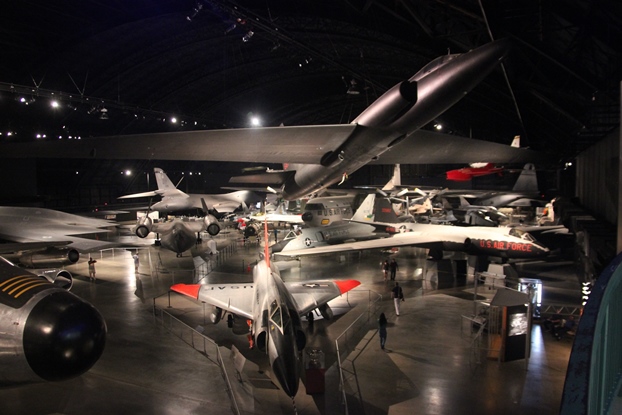
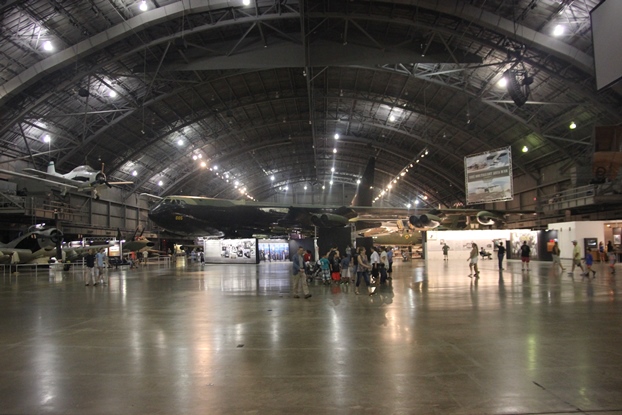


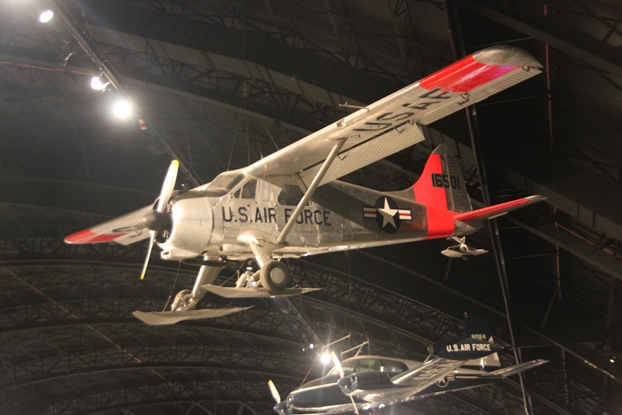
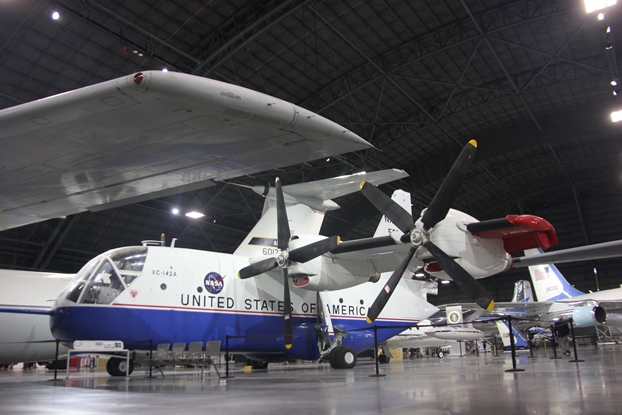
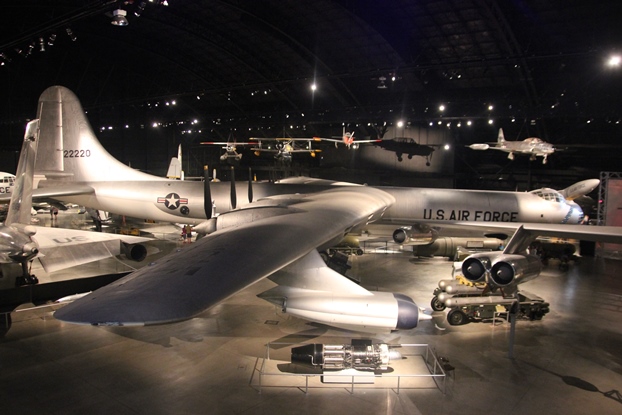
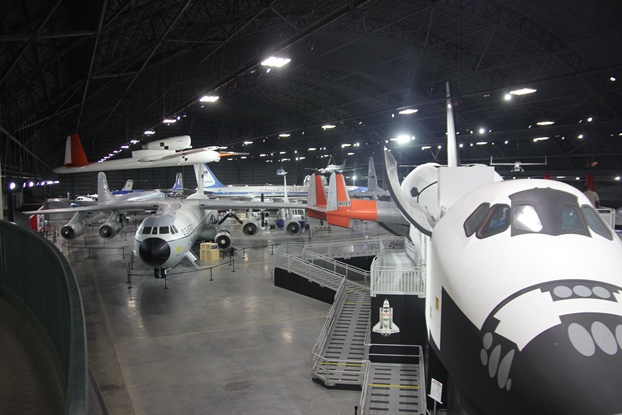


I spent two full days at the museum, barely enough if one wants to have a decent look.
I also went to the Wright Brothers Memorial and the Huffman Prairie Flying Field Interpretive Center, which lies on a hill overlooking the field where the Wright Brothers did all their flight testing after their successful first flights in Kittyhawk, North Carolina in 1903. The field lies within the boundary of Wright Patterson Air Force Base, but is accessible to the public.


Below two pictures of Huffman Prairie Flying Field, where a replica of the original hangar used by the Wright brothers has been built.

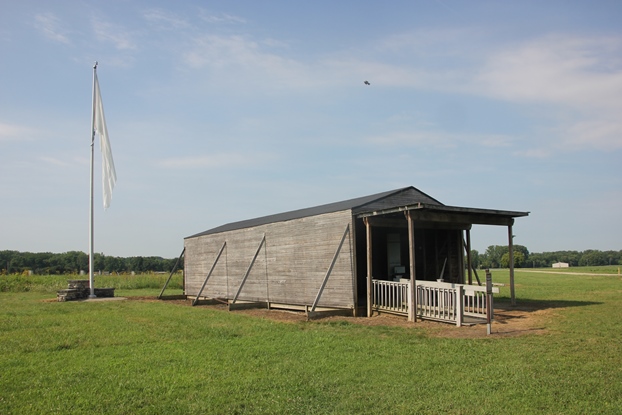
Finally I also went to the Wright Brothers museum in the old downtown of Dayton, which was nice but more dedicated to their private life than to aviation.
03.08.2016: Driving back towards Chicago I passed an small town with the name Wapakoneta, which happens to be the birth pace of Neil Armstrong, the first man on the moon. Of course they have a museum there, the Neil Armstrong Air & Space Museum, and I absolutely had to visit it as I grew up with the Apollo program.
The museum is housed in a bunker style building…
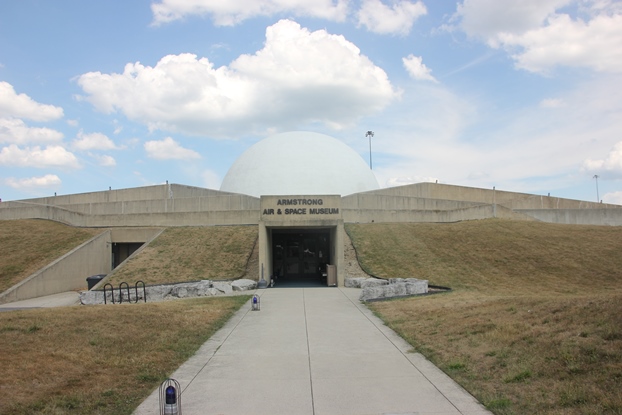
…and not huge, but nicely made. It contains a lot of artefacts more related to Armstrong than to the space program, such as his private plane, which was also the one he learned fly with.
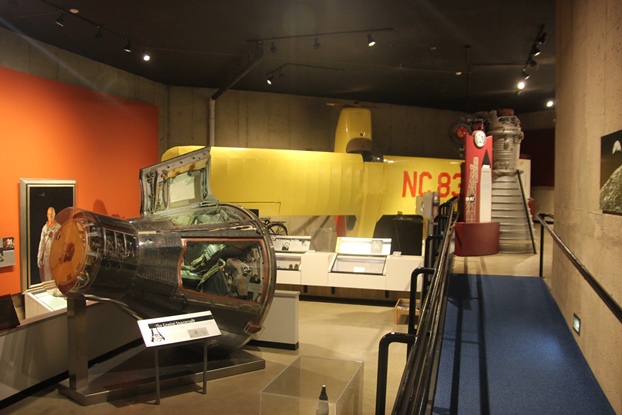
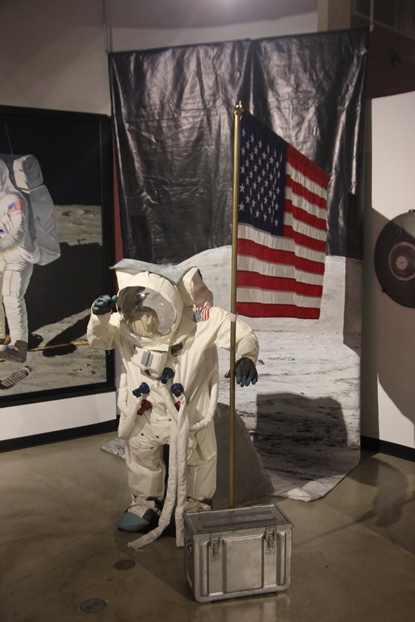
In front of the museum standss a Douglas F5D-1, the only one of four built still in existence. Neil Armstrong used to fly it for NACA on research for the Dyna-Soar project, the results of that project eventually lead to the development of the Space Shuttle.
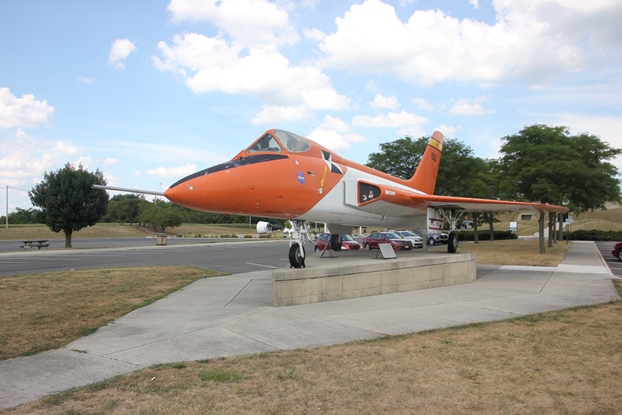
06.08.2016: I flew home again today from Chicago to Zurich. My flight left later in the afternoon, and I had a great view of Chicago as I was sitting on the right side of the plane.

It has been great to be back in Oshkosh, one should really go there every three to four years. And the side trip to Dayton, Ohio was a great choice, definitely worth seeing for everyone interested in aviation.
14.08.2016: It was time again for the annual fly in of the Experimental Association of Switzerland, which took place this weekend in Langenthal (LSPL). The fly-in of the Austrian Homebuilders Association also took place this weekend in Wels (LOAG), Austria, and my plan was to fly to Wels on Friday and then from there to Langenthal on Saturday, to combine the two events. Wels is only two hours from Lommis, and from Wels to Langenthal it is less than three hours, which would have been no problem, but unfortunately it was very poor weather along the rout to Wels during the whole Friday. A big high pressure system was moving East from France, resulting in fairly good weather in Switzerland, but also in moist air being pushed from the North against the eastern half of the Alps, and that’s where I should have flown to. I checked webcams along the planned route via Munich and Salzburg, but there were very low ceilings and rain along the route to Wels for the whole day.
In the end we had to skip Wels, so we flew on Saturday morning to Langenthal, in beautiful weather as can be seen below.

Instead of flying directly to Langenthal we did a stop at Fricktal-Schupfart (LSZI) to visit a friend who is flying there. He had never seen my plane, but could not come to Langenthal as he had airport duty, so we decided to fly there to show him the plane instead. Below the airfield, which lies somewhere in the hills between Zurich and Basel and is not so easy to find…

The runway at Fricktal-Schupfart is not level, but higher in the centre, which gives a strange perspective when landing….

…and even more so when taking off as one can not see the end of the runway. Also acceleration during the takeoff run is slower than usual due to the uphill slope, which combined with the relatively short runway length of 518 m makes some people not fly there, but with the SportCruiser we were airborne about half way down, or rather up the runway.
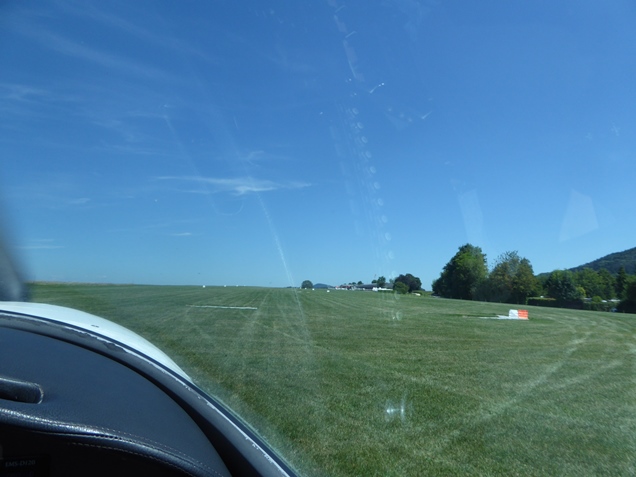
From Fricktal-Schupfart to Langenthal it’s only around 15 – 20 minutes of flight. Langenthal has a slightly longer runway, 579 m, which is paved and level. They managed to get permission to pave the former grass runway a few years ago, a rare event in today’s noise sensitive environment.
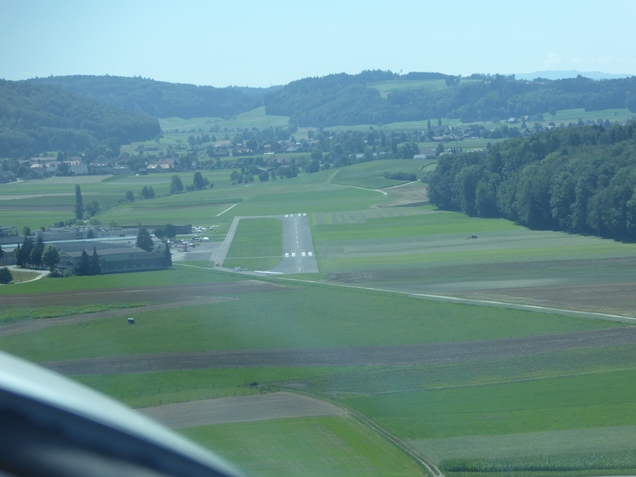
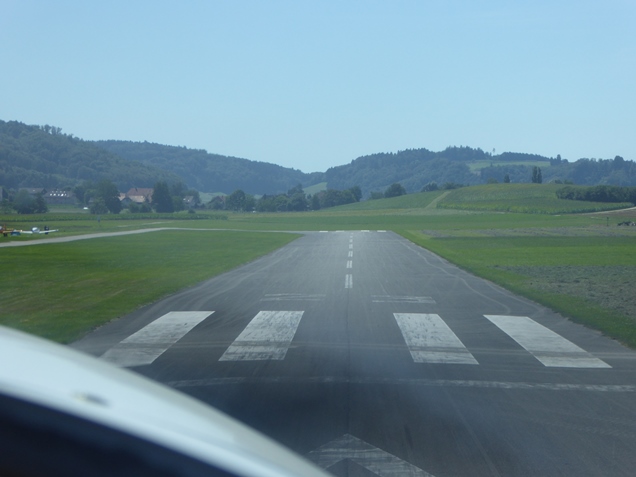
Dani with his Kitfox was already there, demonstrating the loading capacity of his plane by taking not only the usual camping gear with him, but also a cooling box, table, chairs and a sunshade. Cool.

Also Thomas with his Kitfox was already there, and Andi followed with his a little later, an impressive lineup of the Kifrox fraction from Lommis.

Around 50 to 60 planes showed up, could have been more considering the weather but not too bad also.
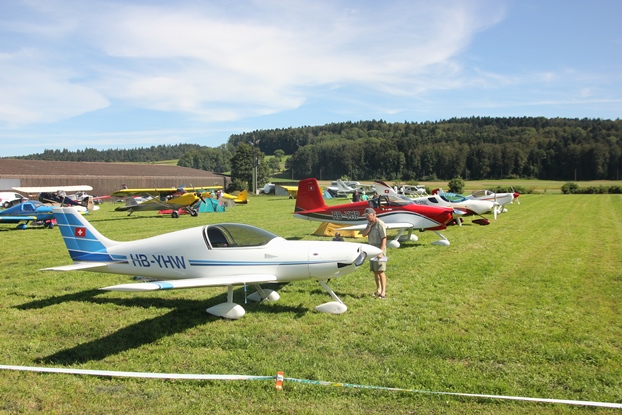
We put up our tent next to a wonderful English couple who flew in from the UK in an RV.
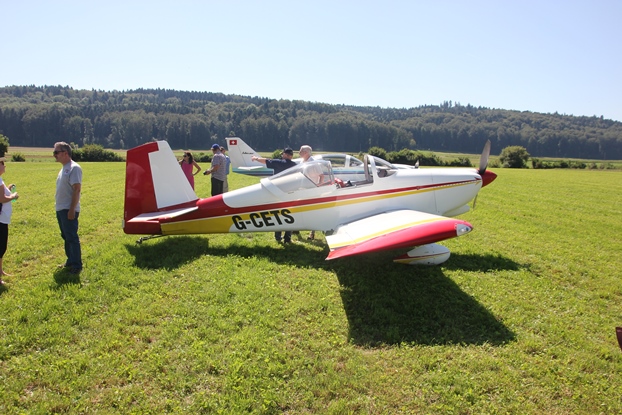
They immediately approached me, exposing themselves as readers of this blog who were hoping to meet me to have a chat on my plane and also to test-sit in it. I was of course more than happy to let them do that, and they told me that they are considering buying a second hand SportCruiser for travelling.
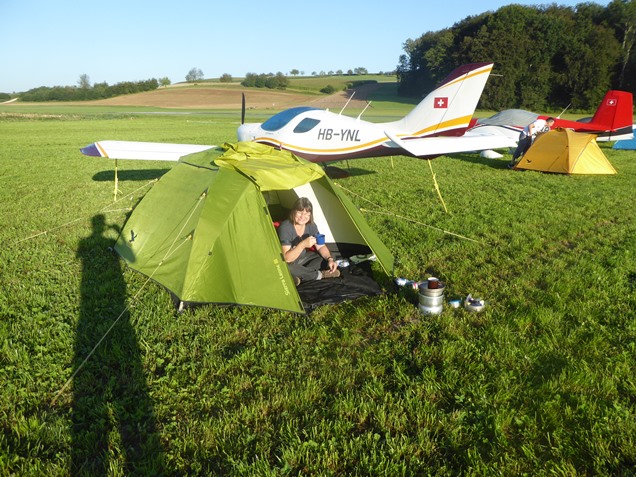
Langenthal is also the home of a company called Daetwyler, which is today mostly producing machines for the printing industry, but which was originally started to maintain and overhaul aircraft. Even though it completely left that business, it can look back over a long history in aviation. Peter Daetwyler, the now retired, former CEO of the company and major shareholder generously let EAS use his private hangar for the evening dinner. He also established a small, private museum in the attic of the company, devoted to their aviation history, and have us a great and very interesting tour of it.

The company went from aircraft overhaul to producing aircraft parts for a number of Swiss military planes, up to the Mirage III, many of which can be seen below.

Many of the parts were improved over their original French design and some of these improvements even found their way back into the French Mirage production.
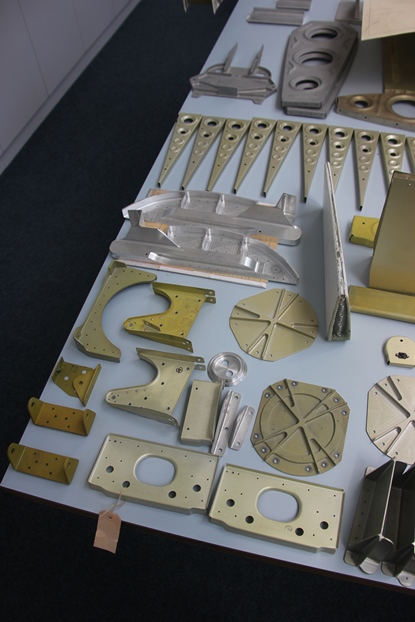

One section of the museum is devoted to the Swiss Trainer, a very innovative training airplane developed by the company in the seventies and eighties. It was certified to FAR-23, and licence-produced in smaller numbers in Indonesia.

They even developed their own aircraft engine, an modern technology, turbo charged four cylinder boxer of 2.8 l displacement with a reduction gear, producing 200 hp and running on unleaded fuel. The engine demonstrated excellent performance, efficiency and very low noise, but unfortunately never went into series production.
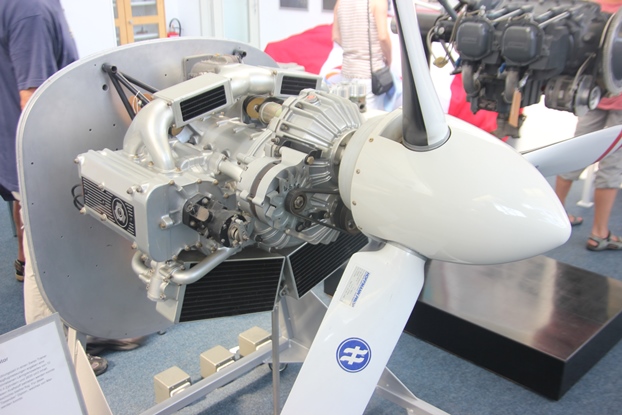


Soon after the tour of the museum we had our annual dinner, as mentioned above in the private hangar of Peter Daetwyler, with probably the last flying Swiss Trainer parked in the background.
This time I did not forget my camping stove, so I could make coffee in the morning.
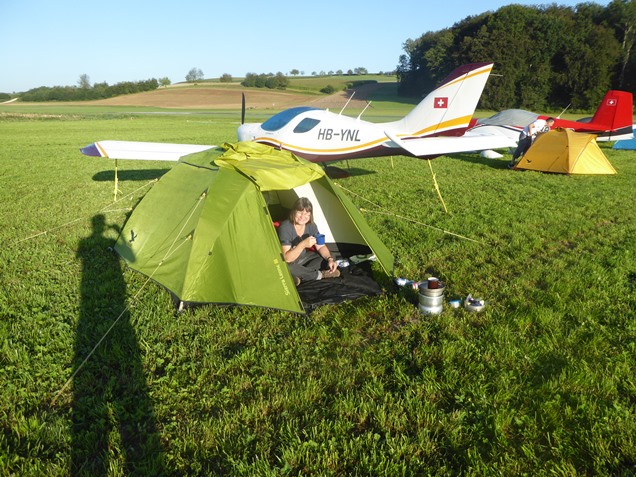
The morning sun gave some nice shine to the dew-wet fuselage, but it was drying quickly.
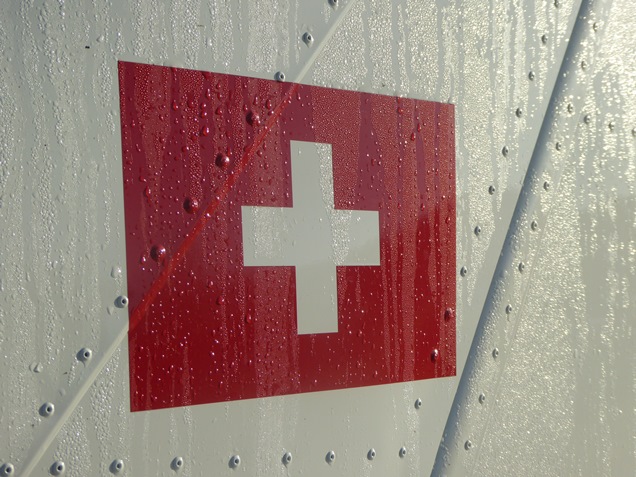

We were also greeted by the sound of a hot air balloon, which was landing only a few metres next to the runway.

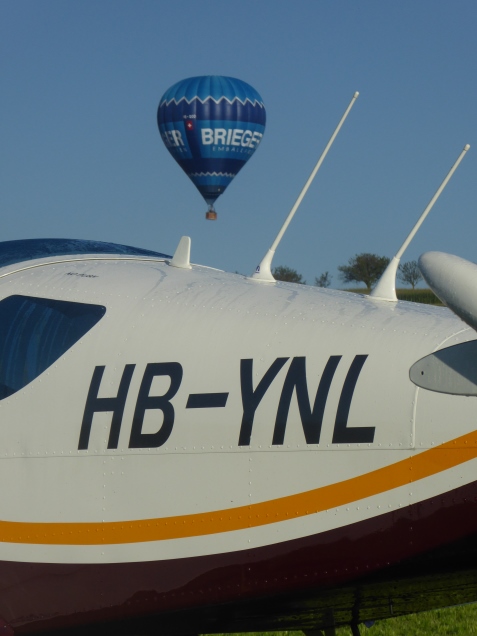
Sunday afternoon it was time to pack up again, below our camping gear before loading it into the plane. This included a tent, two sleeping bags, two self inflating foam mattresses, camping stove, tie down equipment and a personnel bag.

By the way, Viktor was also there with his SportCruiser,…
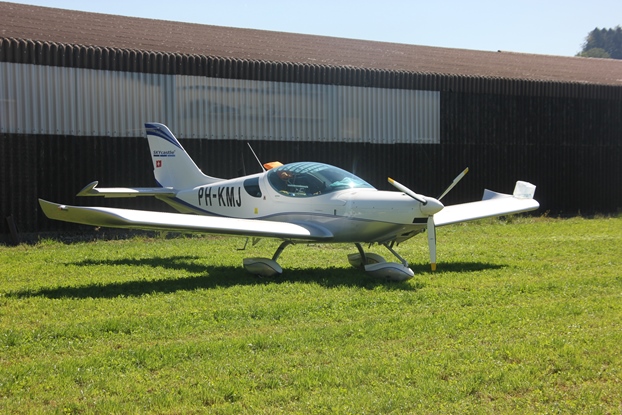
… as well as a couple from the UK with whom I also chatted for quite a while about the plane.
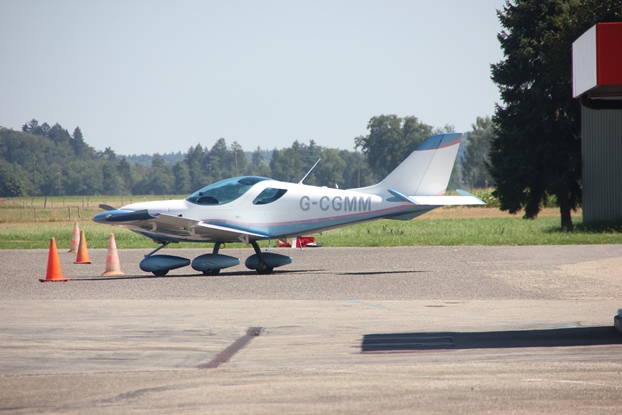

An electric powered glider was also demonstrated,…
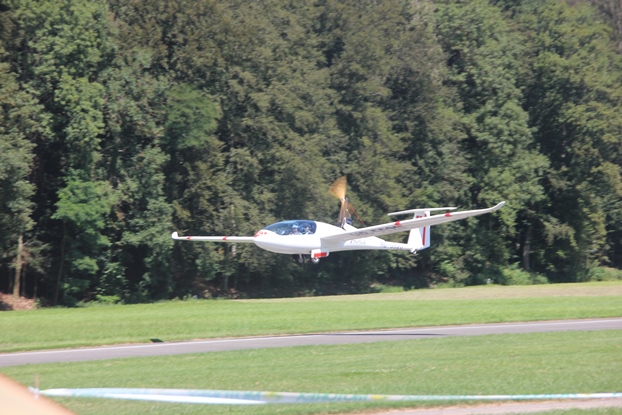
and some friends from Lommis flew in on Sunday for a short visit,

The return flight was uneventful, thanks to the beautiful weather,..

…which seemed to have brought everybody outside including all the boaters, as can be seen below an Lake of Zurich

28.08.2016: We have been planning to visit Dresden since quite a while, and finally did so this weekend. The weather forecast was excellent, the only issue being very high temperatures of up to 34 oC, so we decided to go there by plane.
As can be seen below the weather forecast was correct, blue sky all the way to Dresden.

Switzerland is a Schengen country, but not part of the EU, so we have to stop at a customs airport when entering the EU. That’s becoming more and more difficult, as many smaller airports are loosing their customs possibility largely due to the German government’s reduction of public services to safe money. It’s just the opposite in Switzerland, where more and more smaller airfields, such as Lommis, are getting customs clearance for private flights which don’t carry goods above the permissible, customs-free limits.
We could have flown to Dresden (EDDC) nonstop, but three hours is a bit long and I also like to see new airports along the way. A nice exception from the customs problem is Hof-Plauen (EDQM), which only requires customs notice 30 minutes before landing. They like it if you send them the required information a bit earlier, even the evening before, and then call them before departure to give them the approximate arrival time.
We left Lommis in beautiful weather, crossing the border near Konstanz and proceeding from there via Ulm, with it’s impressive Dome on our left.

We then followed the Danube river on our right.

A bit further I saw a number of strange pylons, which looked like the inflatable cones used for the gates at the Red Bull Air Races, it took me a while torealise that they were windmill towers onto which no windmill had yet been installed.

We continued north along the M7 motorway, where it meets the M6…

…then past one of those tall antenna towers…
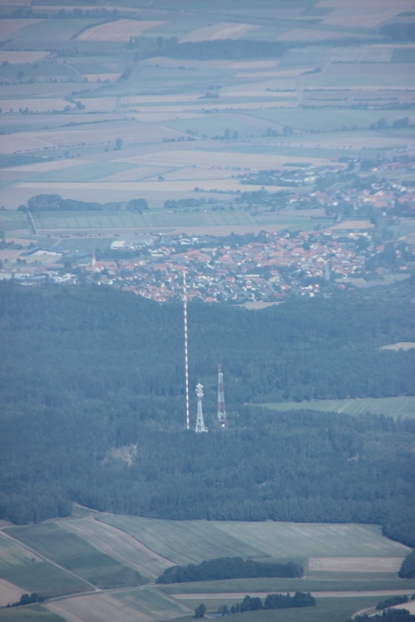
…and a weird row of ponds near Weisendorf, which seem to be used for hatching fish.
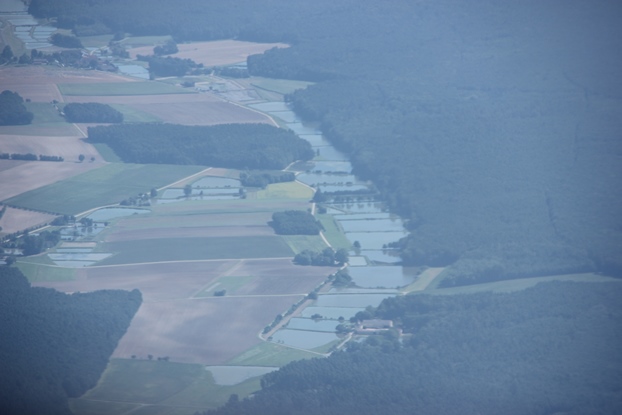
We then turned east, with the mountains of northern Czechia in the far distance.

Some more “Red Bull pylons”, they are really building windmills like crazy in Germany.

Hof-Plauen received us as the only traffic on the frequency, amazing for an airport with 1480 m of paved runway, excellent infrastructure and customs clearance.
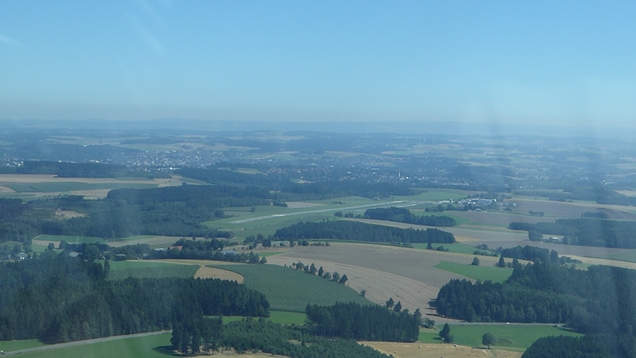
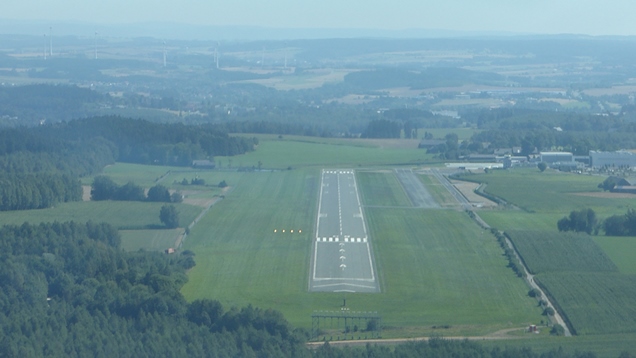
After landing we learned that they have customs clearance as they have a major border crossing to the Czech Republic nearby, which operates 24 hours.
We only took a short break, paid our 9 € landing fee (including customs !), and continued to Dresden, which lies around an hour east of Hof.
We were approaching Dresden from the south, that’s very easy to fly as the reporting point Tango is next to the huge antenna tower right in the middle of the picture.


Taking that route meant we approached the airport passing east of the city, which gave us a nice first view of the city centre with all it’s restored historic building.

The airport lies north of a huge forest, again easy to find and guided by a very friendly sounding tower crew.

We flew into the downwind of Runway 22, with 2850 m about ten times as long as what I would need.
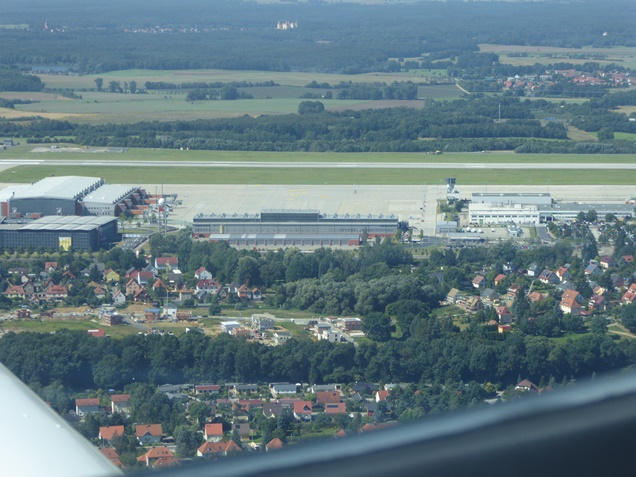

There were quite some turbulences on final, which I later learned from the ground crew is the result of a steep slope near the runway threshold, but as the runway is long enough that wasn’t a problem.
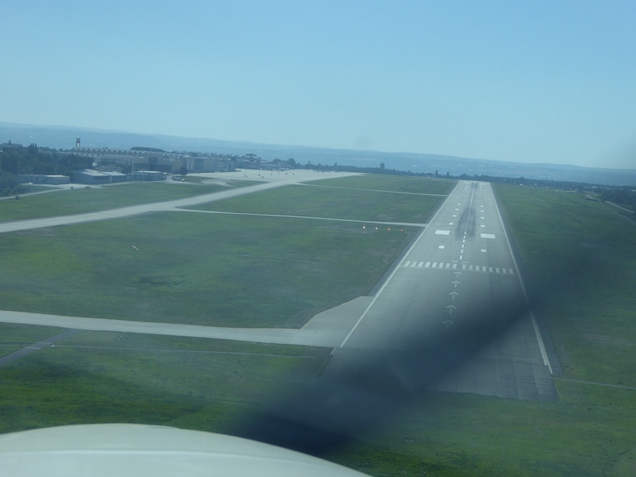
The crew of a Lufthansa Regional jet must have had a great view of our bumpy approach.

After landing I had to taxi around 2.5 km down the taxiway, where we were guided to our parking by a marshaller.
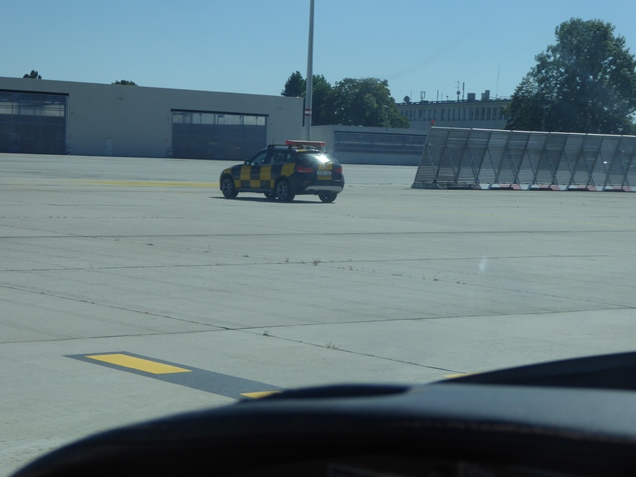
They parked us right next to a wind / jet blast protection fence, probably due to the gusty wind.
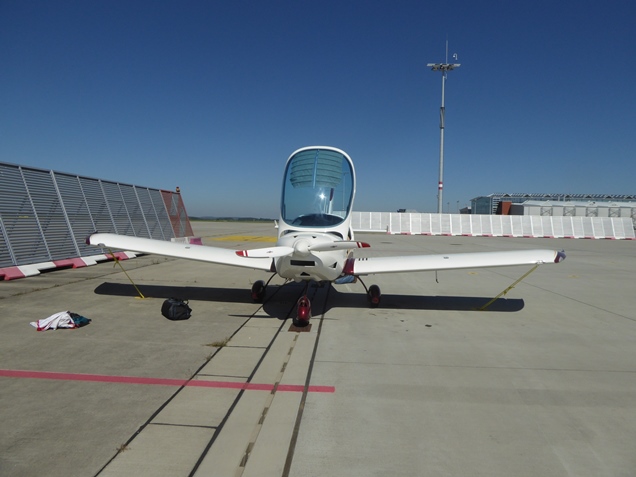
There were only tie downs for the wings within reach of the length of my tie down ropes, but I could fix the tail to the gutters.

The marshaller asked how long it takes to park the plane, and I said 10 minutes, so after that time a crew bus arrived to bring us to the GA entrance of the terminal. Formalities took five seconds, and they even asked whether we need any assistance for our stay, which we did not as we had already booked our hotel. There is a train to the city every 30 minutes, but after 3 hours of flying in above 30 degrees we were quite exhausted, so we took a taxi to our hotel.
Dresden is definitely worth a visit, the city centre has been spectacularly restored since the German reunification.


This is especially true for the rebuilt Frauenkirche, which has been a pile of rubble since the second world war that nobody dared to remove. It has been rebuilt between 1996 and 2005. They say 50% of the material are original stones recovered from the rubble, put back to their original places as in a giant 3D puzzle.
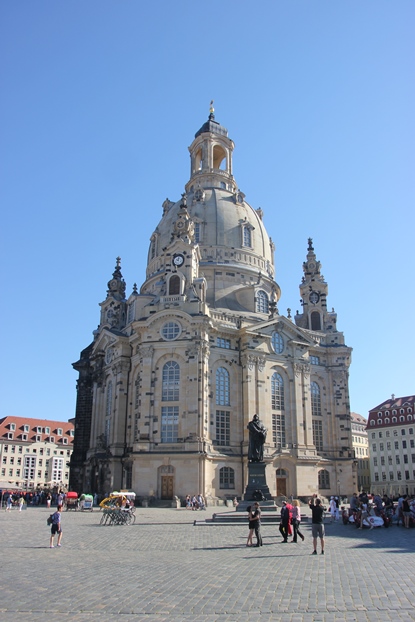
We took a boat tour on Saturday morning along the Elbe river, with nice views on the city and the surroundings…
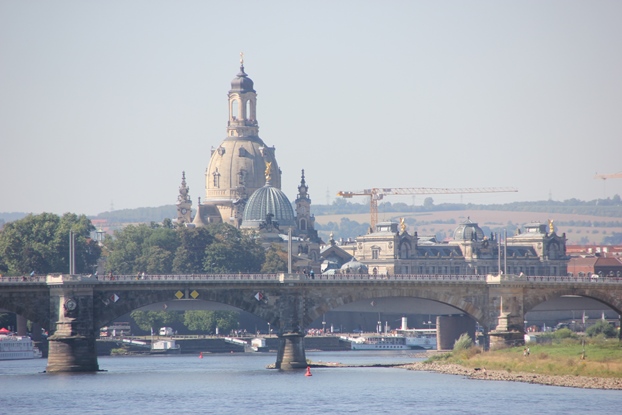
…including the already mentioned tower.
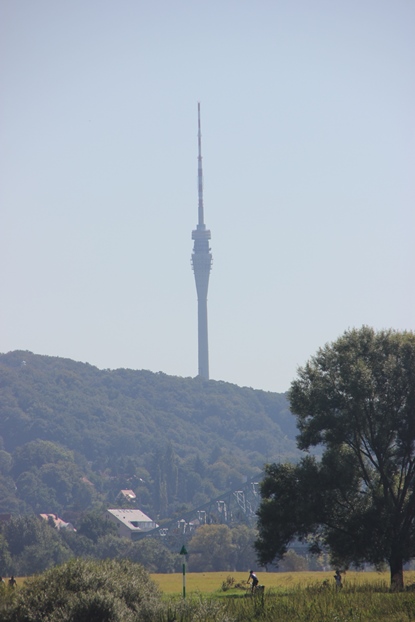
They operate a significant number of old paddle wheelers on the Elbe from Dresden, claiming it to be the oldest fleet of such ships in the world.
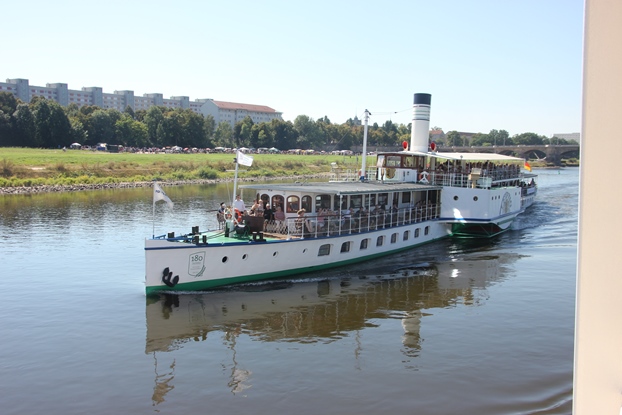

Dresden also has a very nice transport museum right in the middle of the old city centre, worth a visit as many exhibits are from the German Democratic Republic and are therefore not typically seen in “western” museums.
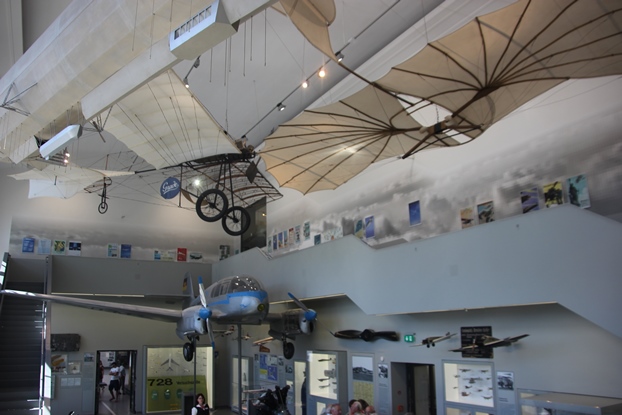

This includes many artefacts from an eastern German jet transport project, which made it to the prototype phase but was then cancelled.

We also climbed a church tower, which gave us a nice view of the city from above…

…and of course went out after dark for a nice dinner.
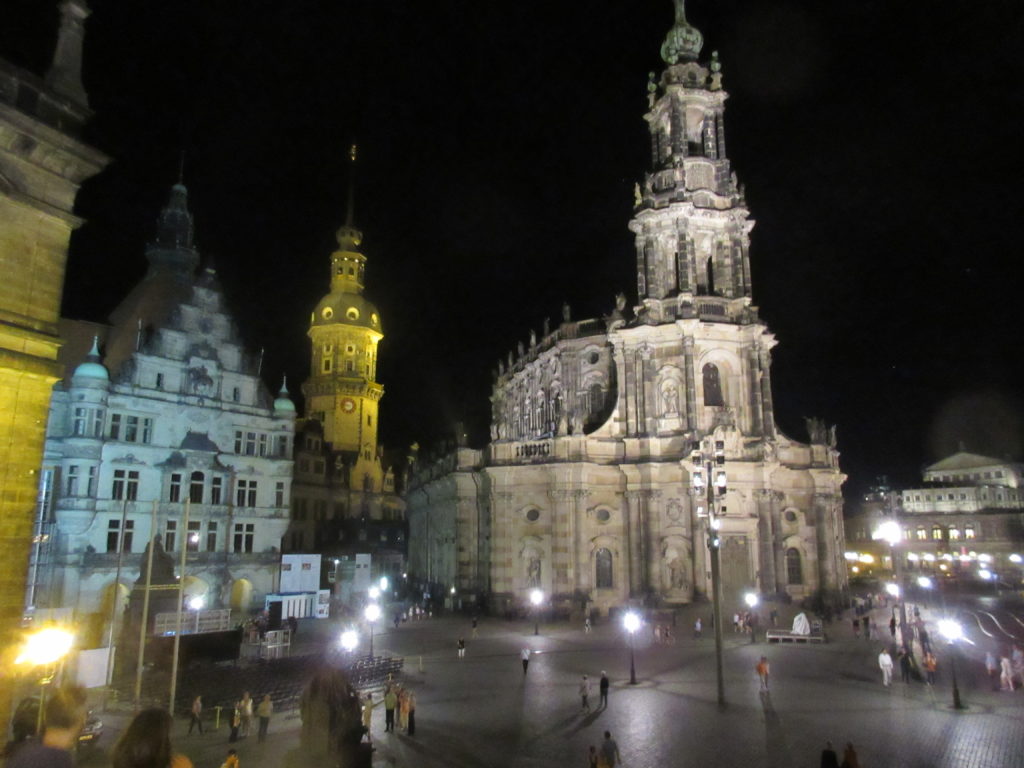
We left on Sunday around noon to fly home again. Dresden airport has a scheme to promote tourism with private planes, where you only pay half the landing fee and no parking fee from Friday noon to Monday noon. The result is that I paid 20 € in total, for a perfect service including crew shuttle to / from the terminal. I’m sure parking the car at the airport for three days is more expensive.
When departing the tower asked me whether an intersection takeoff is ok with around 1300 m runway left, and I told him anything above 200 m will do. That saved us taxiing back 2 more km…
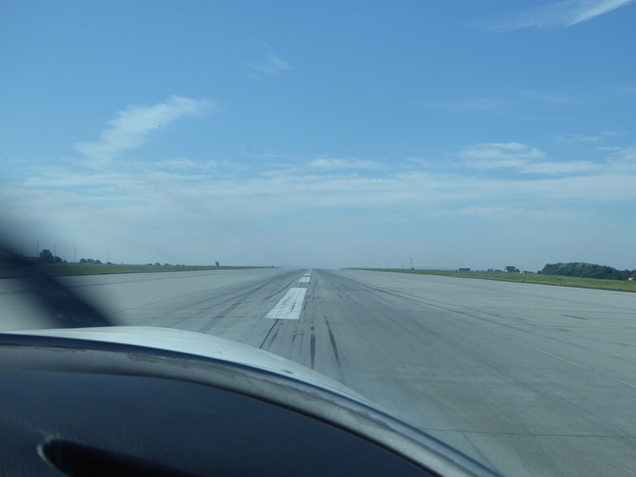
We left again via the Tango reporting point for a last view at the city,…

…as well as at the “blue wonder”, a bridge that was built in 1893 and survived the second world war. It was the first bridge spanning the Elbe river without pillars. and painted in pale blue, that’s where the name came from.
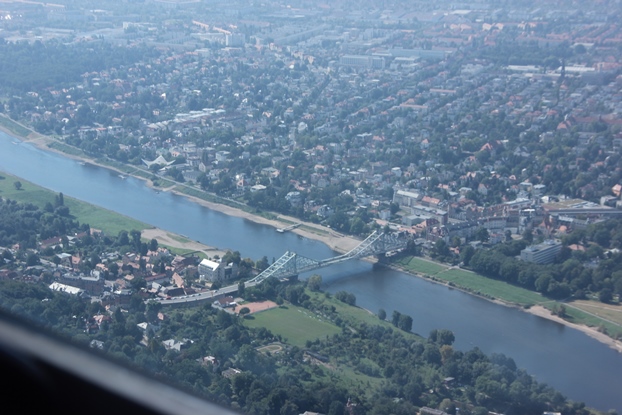
After the Tango reporting point we were heading towards Coburg (EDQC), our fist stop. I initially planned to fly from Coburg to Lommis nonstop, but then learned that you cannot make customs in Coburg anymore on weekends unless the flight is registered already on Friday. That’s not really practical, considering that the departure time has to be announce too, so we decided to add a stop in Memmingen (EDJA).
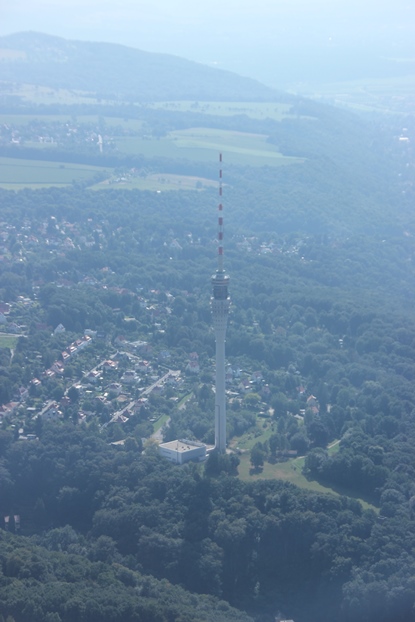
On our way to Coburg we passed the Göltzschtalbrücke, the largest railway bridge in the world built from bricks. That was quite a coincidence, as the history of the bridge is explained in the transport museum in Dresden, and we just saw it from the plane by random, not knowing that it was located along our route. For those who want to see it, it’s located in Reichenbach, 15 km / 10 miles south-west of the city of Zwickau.

We also passed a large artificial lake in the Thüringer mountains, maybe 50 km / 30 miles north-east of Coburg, a good VFR landmark.

Coburg has two airports, or rather airfields, Coburg-Steinrücken (EDQY) and Coburg-Brandensteinsebene (EDJA). The first one is a small airfield mostly used by gliders, and normally only open on weekends, while the second one is the one most people fly to when visiting the city. It’s open daily, has limited customs services, fuel etc. It lies on a hill slightly east and high above the city centre, right next to the impressive Coburg castle. The airfields location is the yellowish field in the middle of the picture below.
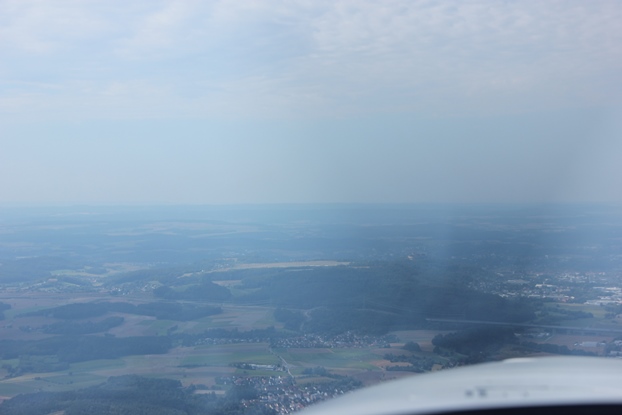
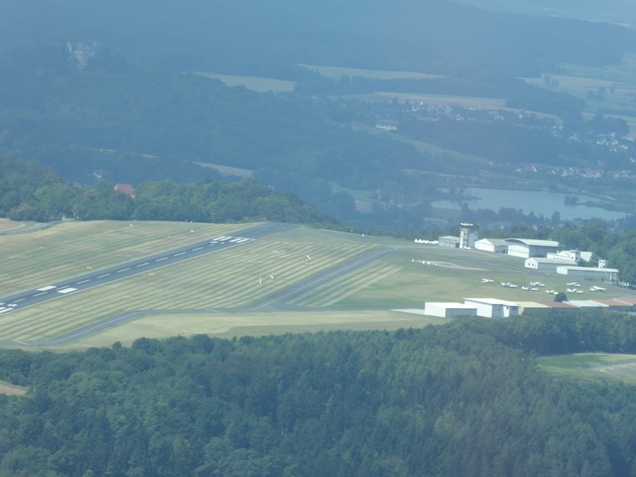
Below a picture taken on the approach to Runway 30, with Coburg Castle visible to the left. Many years ago I landed in Coburg from the opposite side, where one has a great view of the castle on final.
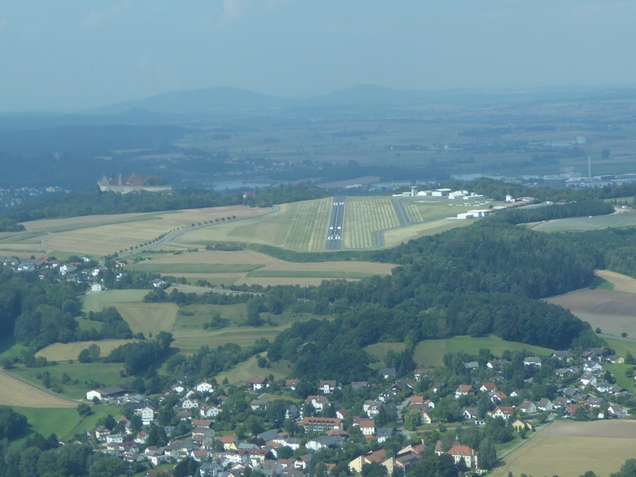
Below one can see that the airfield lies on a hill, with steep slopes on both ends of the runway, which can result in quite significant down drafts and turbulences. This time it was however ok, as there were only a few knots of wind.

We took some fuel in Coburg, and then continued straight to Memmingen (EDJA). Lommis to Dresden and back is around 6 1/2 hours of flying time, which is slightly above the endurance of the SportCruiser. Coburg does not have Mogas, so for once I took Avgas.
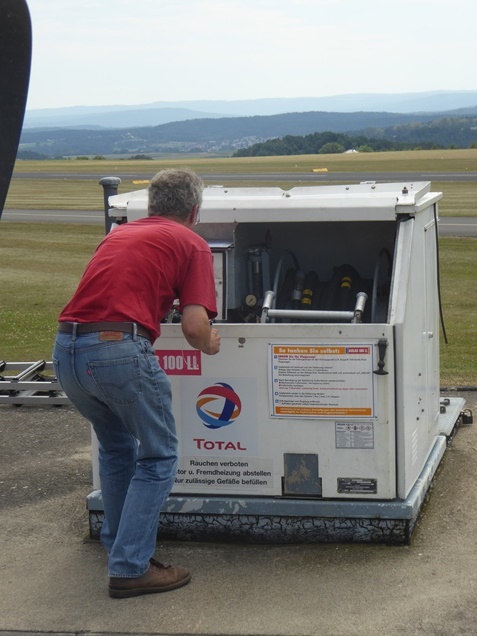
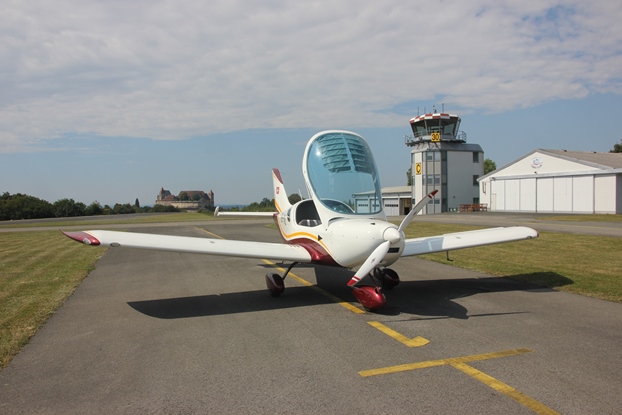
We went up to the tower to pay our 6 € landing feed, I’m always amazed how low landing fees are in Germany.
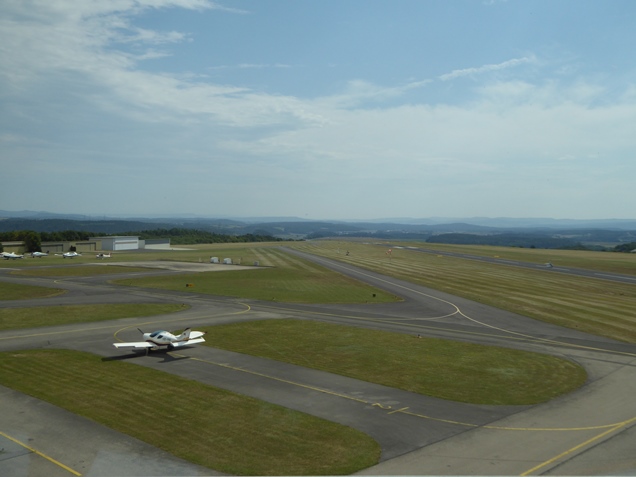
When departing we had our nice view of the Castle, the next time we have to take some time and visit it as it is only 15 minutes on foot from the airport.
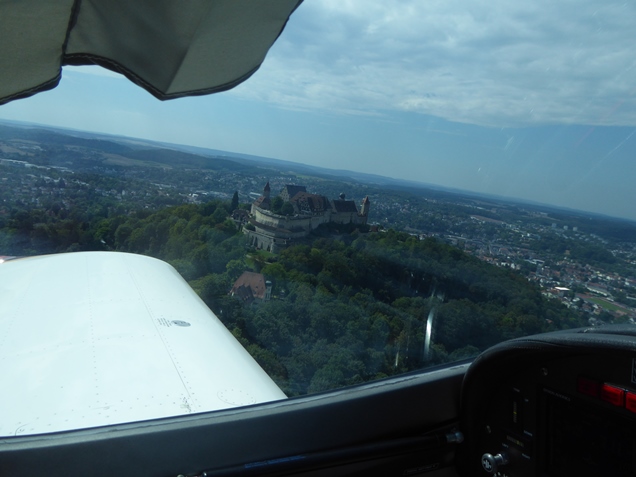
On our way south we passed a large thunderstorm, which looked very impressive, but lied west of our intended course, so we did not have to detour around it.
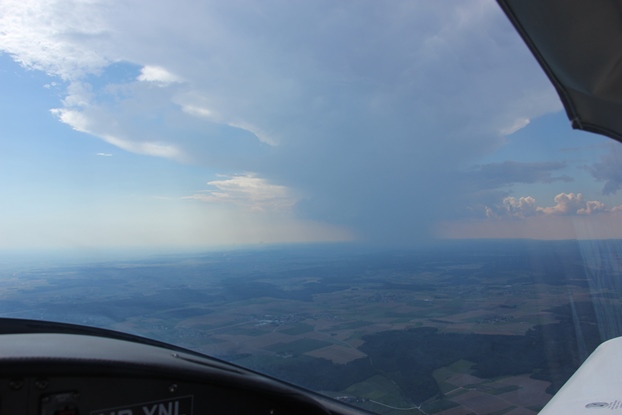
Memmingen was quite busy when we arrived, it’s one of those (too) many regional airports in Germany which were developed during the last maybe 20 years and are now struggling to attract airline traffic.
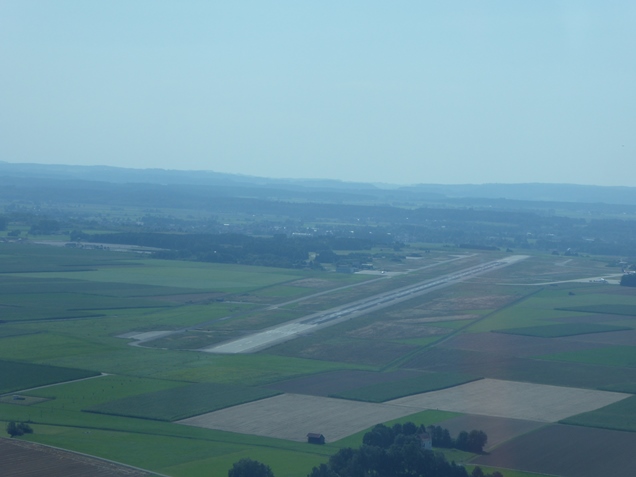
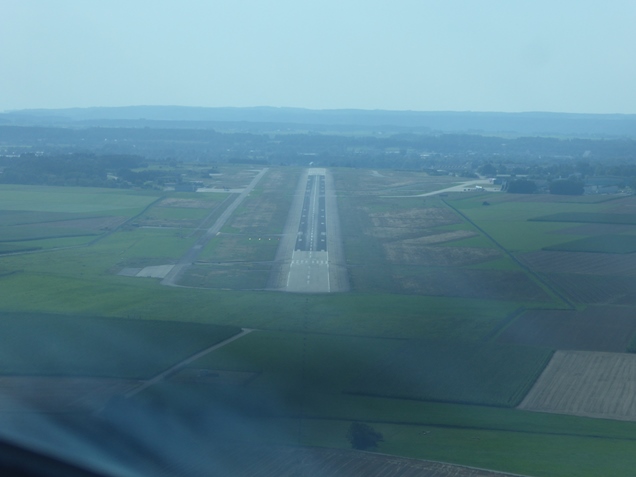
Our stop for customs was not as quick as intended, as they had three airliners arriving nearly at the same time. On top of that they also had a false ELT alarm from a parked GA aircraft, meaning we had to wait for nearly 45 minutes at the security check before the “C”-office staff had time for us.
Next to the security I saw the sign below, something that can probably only be found at an airport in Bavaria. I was tempted to go there, as it was around 34 oC, but then we would have had to stay for the night.

Most of the traffic they have in Memmingen is from/to tourism destinations in southern or eastern Europe, operated by rarely seen eastern European airlines or low cost carriers such as Ryanair. Below a plane from Pobeda airlines, a Russian low cost carrier owned by Aeroflot, which operates to Memmingen from Moscow.

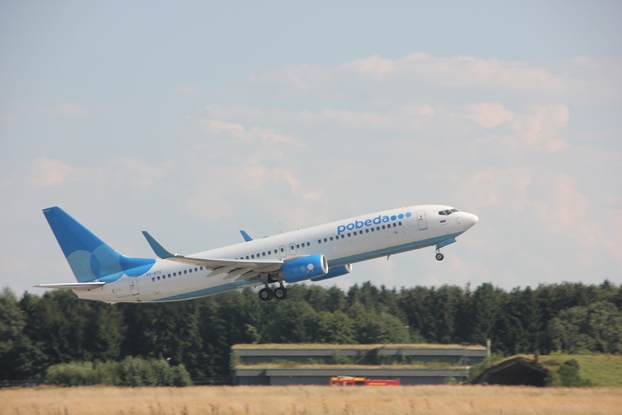
As a result of the delay I had to push back my announced arrival time for customs in Lommis twice, first by half an hour and then by another hour. In the end we did however manage to take off after they had sorted out their various airliners and also a business jet, which they had made lining up on the runway, but then realised it had no departure clearance from ATC so they had to make it taxi back to the apron.
Flying back to Lommis from Memmingen was 45 minutes, and uneventful once we were in the air. And finally nobody showed up for customs.
All in all we flew on our trip 7 hours airborne time / 7:30 off block time, consuming around 130 l of fuel and making 5 landings. Dresden is definitely a nice destination to fly to, and worth staying for a longer weekend.